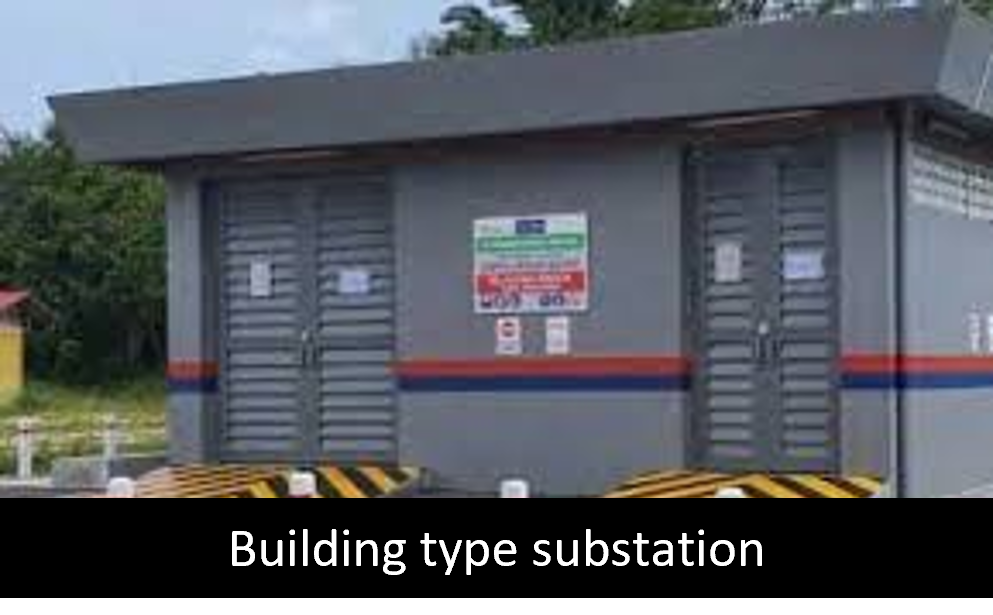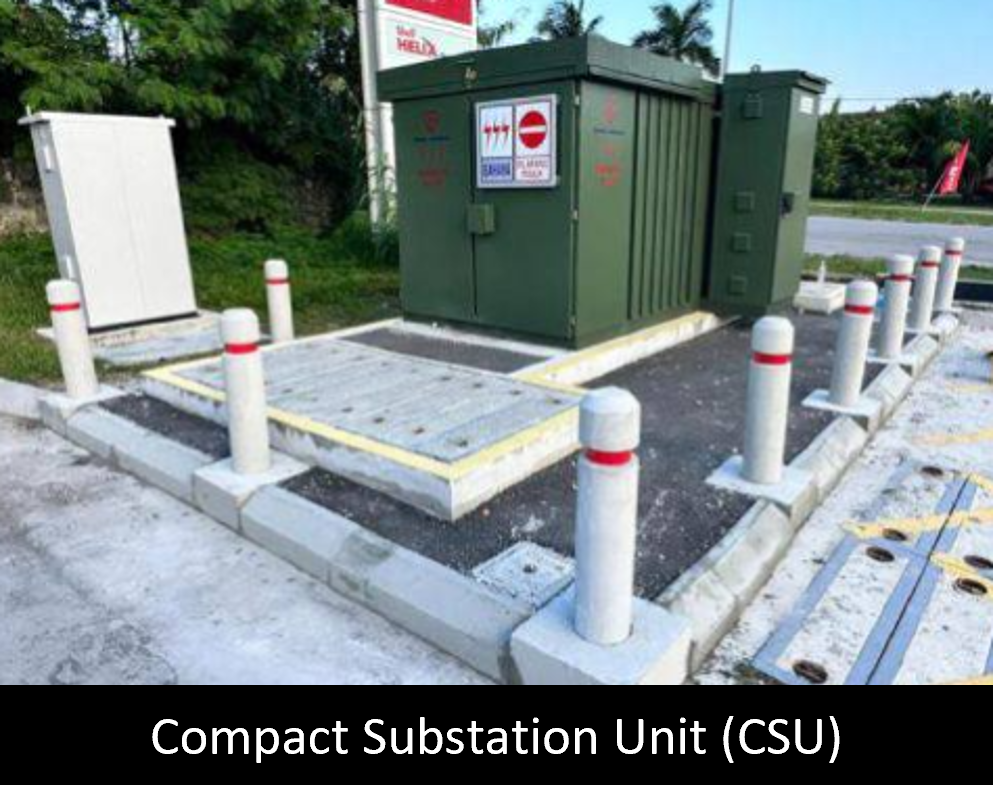Choose by categories:
Compact Substation Unit (CSU) installation guidelines
What is Compact Substation Unit (CSU)?
Compact substation is a pre-fabricated, fully enclosed electrical substation that combines several components into a single, compact and transportable unit.
Compact substation is being considered as standard substation for installation at new development projects since 2016.
When is a 11/0.4kV substation normally required?
Substations are one of the key components in the electrical distribution system that functions to step down medium voltage (11kV) to low voltage (0.415kV) for the purpose of distribution to end users.
Substations typically consist of main electrical equipments such as transformer, switchgear and feeder pillar.
Types of substations include:
-
Building type – standalone/attached to building.

-
Compact Substation Unit (CSU) – an integrated, pre-fabricated unit.

A substation is considered for installation in new development projects under the following circumstances:
- New or growing electricity demand in residential, commercial, or industrial areas.
- Existing substations can no longer support the increased demand.
- System improvement due to organic load growth.
Why are Compact Substation Units (CSU) 11/0.4kV considered?
Space Constraints
- In urban areas, residential or commercial complexes, have limited space for traditional substations.
-
Compact substations are fully enclosed and take up significantly less area.
Decentralized Power Distribution
-
Located strategically to distribute power efficiently
Cost and Time Efficiency
- Reduces civil work, wiring, and installation time.
- Lower overall cost compared to building a traditional substation.
What is the standard land size for Compact Substation Unit (CSU) 11/0.4kV?
Standard land size for Compact Substation Unit (CSU) 11/0.4kV is 5m x 7m. The land size must comply with the building setback requirements as stipulated by the Local Authority (PBT) or relevant authorities.
What is the capacity available for Compact Substation Unit (CSU) 11/0.4kV?
Maximum capacity of compact substation 11/.4kV for new housing development (domestic consumers) is 500kVA.
Maximum capacity of compact substation 11/.4kV for new commercial and industrial development is 1000kVA, subject to availability of matching size metering kiosk for single customer connection.
Where are the suitable locations for Compact Substation Unit (CSU) 11/0.4kV?
Compact substations should be placed close to the load center.
Compact substations should not be placed at the corners of development projects, and to be away from sewerage plants.
Compact substation cannot be placed close to each other to ensure efficient load distribution to the consumers.
The selection of compact substation placement is subject to TNB system planning and operational requirements. Compact substation is not suitable in the following circumstances that requires indoor-type substation:
- Places identified for circuit breaker installation including important and sensitive places.
- Places with more than two 11kV feeder connections.
- MSC status area.
- Within the attached type substation building.
What is the current scope of work and responsibilities for applications involving a Compact Substation Unit (CSU)?
For Applications Submitted Before 22 November 2024:
- The developer/user must hand over the land for the substation site and construct the CSU plinth together with its accessories.
-
TNB will carry out the installation of the CSU.
For Applications Submitted After 22 November 2024:
- The developer/user only needs to hand over the CSU site land in accordance with the relevant legal processes*.
-
TNB will construct the CSU plinth and accessories, and install the CSU, with all related costs borne by TNB.
Scope of work and responsibilities of developer/applicant also include:
- Identify the location of the CSU substation site, measuring 7m x 5m, in accordance with substation guidelines and with mutual agreement from TNB.
- Obtain approval for Planning Permission (KM) / authorization from the Local Authority (PBT) / Land Office / or any other relevant government agency for the designated CSU substation site.
- Handover or obtain the early site access approval letter for the CSU substation site and provide land acquisition documents for the substation site.
- Mark the boundaries of the CSU substation site on the ground.
- Ensure the substation site is free from any legal issues, encroachments, or existing utility installations, with verification by a Licensed Land Surveyor.
- Ensure that the substation land and access road are ready and accessible for TNB to commence site construction works.
- Submit a Soil Investigation (SI) Report for the CSU substation site, certified by a Competent Engineer.
Who is responsible for bearing the construction cost of Concrete Plinth (Precast Concrete) and installation of Compact Substation Unit (CSU)?
TNB will construct the CSU plinth and accessories, and install the CSU, with all related costs borne by TNB.
How can the use of Compact Substation Unit (CSU) benefit consumers?
These benefits come from improved space efficiency, safety, space optimization, and service reliability.
Where do I find reference for Supply Application and Electricity Supply Act?
For more information, you can refer to the following official website;
